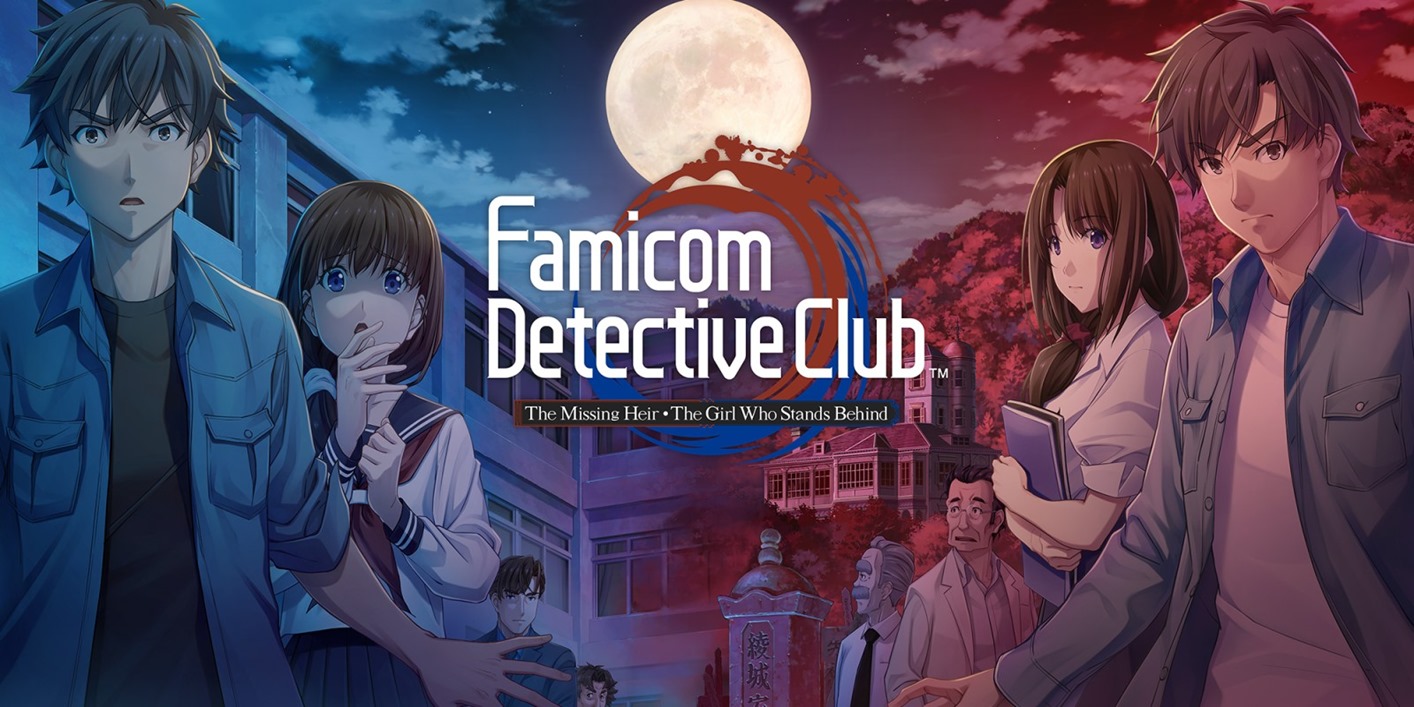Visual novels are a strange genre with a harsh divide in audience. Folks either adore games in which you sit and really just read a novel represented by some lovely visual effects or they can’t stand how dull and “not a game” they all are.
There’s no in-between usually and I can understand why. Some people enjoy the low-effort gameplay of just clicking on certain things and listening to characters speak, all the while mashing the skip button to traverse through dialogue paths you’ve already discovered. Yet admittedly, when you play a bad visual novel… yeah, that’s boring. If you were to go back to one of the grandfathers of the genre, Famicom Detective Club, you’ll no doubt find that to be the case. The original games haven’t aged all that elegantly which is why Nintendo has spruced them up for the Switch.
Which is good! Both The Missing Heir and The Girl Who Stands Behind are important landmarks for an entire genre. Just be aware that while they certainly look a whole lot better there are elements that remain frustratingly dated.

It’s genuinely cool to see Nintendo remake both Famicom Detective Club games for the modern era. Completely rebuilt from the ground up, both games now come with some beautifully illustrated and sparingly animated visual components to breath more life into the narratives. While I’m not usually one for anime art styles (they all eventually blur together for me) the landscape imagery and character designs go a long way to enhance the stories being told.
Looking at the original games, they present themselves like someone sketched their favourite anime scene in Paint with nothing but the pencil option. From what I’ve been able to research many of the visuals have been redone on a one-to-one level to further pay homage to the original games. These new accompanying images are bright and vibrant with a soundtrack that sounds classic yet modern. From presentation alone, this looks and sounds like a game made by people who adored the original.

Yet when you get into the actual gameplay the more dated elements begin to rear their dusty heads. As with many visual novels, you’ll be taking centre stage as the star of the story: The titular detective. In order to interact with the world and characters you can use a “Detective Command” tab that lets you perform actions like “Talk, Examine, Take, Call/Engage” as well some more game specific examples like “Remember” for The Missing Hear and “Think” for The Girl Who Stands Behind.
This layout works fine and the user interface does a solid job of communicating what you need to know. It just feels rather… disconnected from the action. “Gameplay” is sparse in Famicom Detective Club as the most you’ll be doing is moving a cursor over a screen and clicking on points of interest. The actual deductions are often made by your character and the puzzle-solving only really reaches a difficulty of, “There’s something on this screen, find it”. It doesn’t help that there are times where the game feels rigid and obtuse, requiring a very specific sequence in order to progress.

This problem is especially pronounced in The Missing Heir, which makes sense given that it presents the blueprint for the whole series. On more than one occasion was I stuck just scrolling through and selecting every possible option just so I could figure out what exactly the person I was interviewing wanted me to say next. The Girl Who Stands Behind, as a game, flows much smoother and sign posts a lot more efficiently. It makes sense given that it was already remade for the Super Famicom back in the day.

Yet that sometimes frustrating progression was usually worth it for the story. Perhaps I’m old school but I adore a good ol’ fashioned whodunnit; it’s a genre that’s underrepresented in video games and visual novels are often the only attempts at doing it well. The Missing Heir is a great example of well-told murder mystery with several layers to its investigation. You’ll be called out to a mansion in the country side because someone has murdered the owner of a powerful corporation and you being the detective need to figure out who was responsible.
Red herrings, dead ends, startling revelations all surrounded by a diverse cast of characters. You’ll no doubt find someone to latch onto throughout the first game, I just wish my protagonist (named MyDude, my default name at this point) had a little more to him. That’s the difficult part of using a player insert in such a narrative-heavy game, they often come across as dull when the player just really wants to express themselves better.

As for The Girl Who Stands Behind, it represents a complete tonal shift away from the first game. Taking on more horror elements, MyDude is tasked with figuring out who (or what) is killing the girls of a local school. The sequel ditches a lot of the more traditional mystery elements for something more modern, focusing on the supernatural as a potential threat. While both games have that element, it’s clear that The Girl Who Stands Behind wants to be considered a horror game. While the game is still compelling, I found myself less engaged with this particular narrative. The characters here are more… obnoxious and often irritating than I would have liked. Having said that by the time credits rolled, I was satisfied with the conclusion of a mystery well told.

That’s really what you need to focus on when playing Famicom Detective Club: The story. The gameplay is so limited and often stilted that fans of more modern visual novels will no doubt find it trite but those looking to experience the birth of a genre and appreciate a piece of Nintendo history which never actually made it out West back in the day should check out either of these games. They’re a loving remake of two quietly important games that still manage to deliver compelling stories despite some dated designs.
Last Updated: May 12, 2021
| Famicom Detective Club | |
|
Famicom Detective Club: The Missing Heir and The Girl Who Stands Behind are well-told and compelling mystery games presented in a loving remake that improves on the original titles while sometimes remaining a little too faithful to outdated designs.
|
|
|---|---|
| Famicom Detective Club was reviewed on Nintendo Switch | |
|
74 /
100
| |





















DapperWoef
May 17, 2021 at 10:20
https://uploads.disquscdn.com/images/9958244965262c57a615b0b96bf3ed17e0fdcb74fbb25679db480c75a29762cc.jpg
Old Age not doing mayor Haggar any favors…